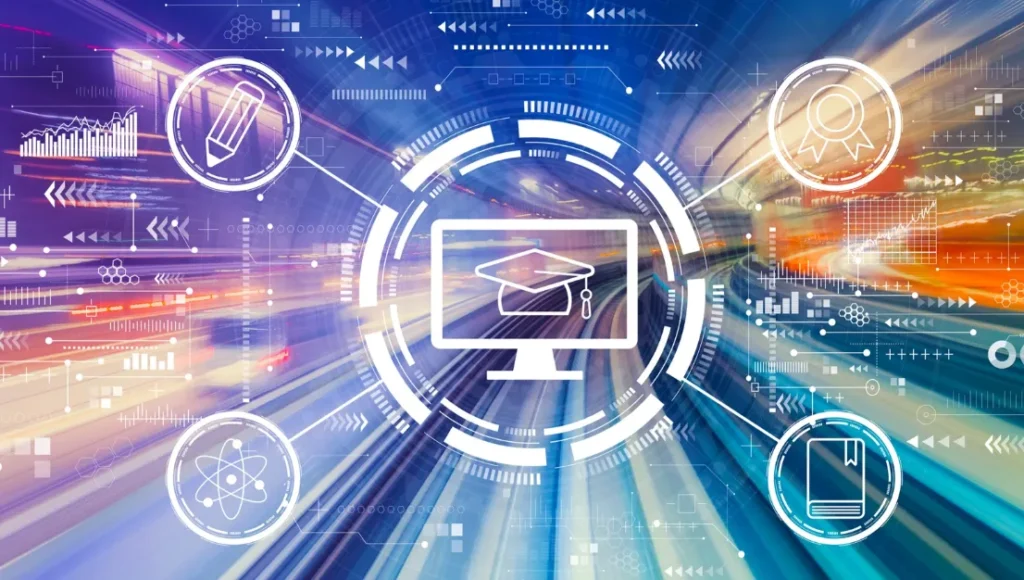The digital revolution has dramatically changed how education is delivered, making it more accessible, engaging, and efficient. As schools and universities continue to embrace digital platforms, the transformation of traditional education is not just about technology but about creating more dynamic and personalised learning experiences. UNESCO states that digital technology is now a social necessity, essential for ensuring education as a fundamental human right, particularly in a world facing increasing crises and conflicts.
This shift towards digital platforms is not only enhancing the learning experience but is also helping bridge gaps and ensure that education remains available to all. Let’s explore how digital platforms are transforming education and why this shift is benefiting students and educators alike.
The Shift from Traditional to Digital Learning
In the past, education was mostly confined to physical classrooms, where students would sit in rows of desks and listen to lectures. While this model worked for many years, the advent of digital platforms has introduced new ways to interact, collaborate, and learn. The shift to digital education allows for a more flexible approach to teaching, offering students the opportunity to learn at their own pace and on their own terms. For example, students can access course materials, participate in interactive activities, and take assessments online, without the constraints of a fixed timetable or location.
Personalised Learning Experiences
One of the most significant benefits of digital platforms is the ability to offer personalised learning experiences. Traditional classrooms often follow a one-size-fits-all approach, but digital platforms can adapt to the needs of each student. By using data-driven insights, these platforms track individual progress and adjust the learning path accordingly. This personalised approach ensures that students receive the right support at the right time, helping them to reach their full potential. As students progress through courses, the system can recommend resources, exercises, or additional materials tailored to their learning style and pace.
Increased Accessibility and Flexibility
Digital platforms have made education more accessible to a broader audience. Students can now learn from anywhere, at any time, without the need to be physically present in a classroom. This flexibility is particularly beneficial for non-traditional students, including working adults, remote learners, and individuals with disabilities. The ability to access content through a variety of devices—smartphones, tablets, or computers—makes education more inclusive, allowing learners to overcome geographical, time, and personal barriers.
Moreover, digital platforms often include features such as text-to-speech, closed captions, and screen readers, ensuring that students with disabilities can fully engage with the content. These accessibility features promote a more inclusive and equitable learning environment for all students.
Data-Driven Insights for Educators
In addition to benefiting students, digital platforms also provide valuable tools for educators. With data analytics, teachers can gain real-time insights into student performance, identifying trends and areas where students may need additional support. This information helps educators adjust their teaching strategies, providing more targeted interventions for students who are struggling. The use of data not only improves teaching effectiveness but also enhances the learning experience for students, helping them stay on track and achieve better outcomes.
Streamlining Assessment and Feedback
Digital platforms have revolutionised the assessment process by streamlining the creation, administration, and grading of assessments. Schools and universities can now manage online assessments efficiently, saving time and improving the overall experience for both students and educators. Online platforms provide teachers with automated grading tools and instant feedback, allowing students to understand their strengths and areas for improvement immediately after completing assessments.
These platforms also ensure that assessments are secure and fair. With advanced online proctoring tools like janison.com, educational institutions can maintain academic integrity, even in remote settings.
Supporting Collaboration and Engagement
Another key advantage of digital platforms is their ability to foster collaboration and engagement among students. Online discussion forums, group projects, and collaborative tools allow students to interact with peers and teachers in real time. These collaborative spaces enable learners to share ideas, ask questions, and work together, enriching the educational experience. By promoting peer-to-peer learning and interaction, digital platforms make education more interactive and dynamic.
Future of Education with Digital Platforms
The future of education is digital, with technology playing a key role in shaping learning. Advancements in AI, machine learning, and adaptive learning are making digital platforms more personalised, offering real-time recommendations and tailored learning paths to meet each student’s needs.
As technology evolves, educational institutions must adopt these tools to create more inclusive and flexible learning environments. Using data-driven insights, encouraging collaboration, and simplifying assessments, digital platforms are transforming education, empowering both educators and students. The future of learning is dynamic, personalised, and effective.
